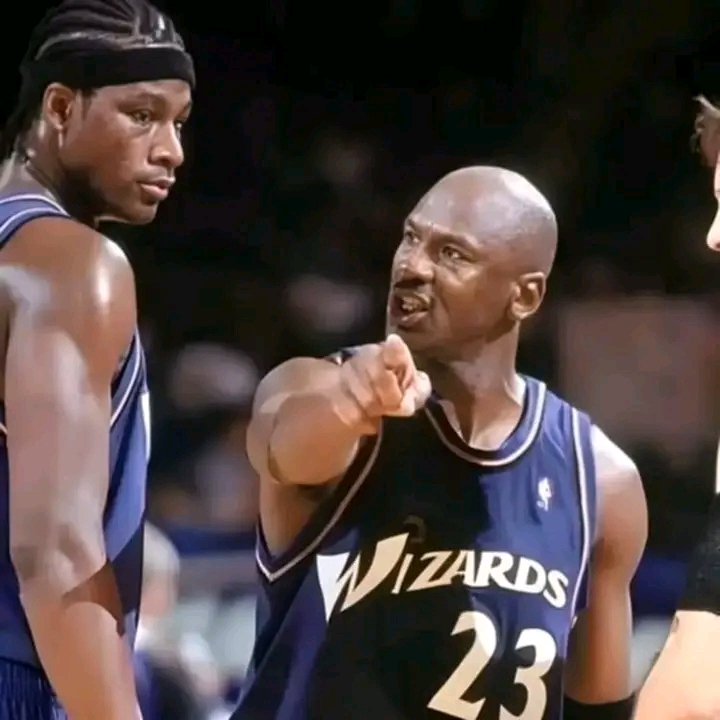‘MJ Never Wanted Me’: The Untold Story of Kwame Brown’s NBA Hell — And Why He’s Finally Speaking Out
“If y’all experienced what I experienced at the age of 18, y’all would’ve been looking for the highest bridge to jump from.”
— Kwame Brown
🏀 From No. 1 Pick to National Punchline — But What Really Happened?
For over two decades, Kwame Brown has worn a label that no young athlete ever asks for: “NBA bust.” As the first overall pick in the 2001 NBA Draft, chosen straight out of high school by none other than Michael Jordan and the Washington Wizards, Brown’s career was set up to be legendary.
Instead, he became a punchline.
But now, in a raw and revealing message to the public, Brown has finally opened up about the behind-the-scenes truth of his early NBA years — and it’s nothing like the narrative fans were fed.
🔥 “Michael Jordan Never Wanted Me From Day One”
According to Brown, the fairytale of being drafted by the greatest basketball player of all time was just that — a fairytale.
“Michael Jordan never wanted me on the Wizards. He drafted me to trade me for Elton Brand, but the owner blocked the trade,” Brown revealed.
The plan, Brown claims, was never for him to develop under Jordan’s mentorship, but to serve as a pawn in a deal that didn’t happen. And when it didn’t? He became the target.
“They used to bring old veterans into practice just to have them foul and beat the crap out of me. I had Charles Oakley threatening to beat me up. I was an 18-year-old kid.”
Rather than being nurtured into stardom, he was brutalized, emotionally and physically — all while under the brightest media spotlight a No. 1 pick could face.
🛑 A Childhood Promise, a Grown Man’s Reality
Long before the NBA, Kwame Brown was a kid from Brunswick, Georgia, raised in poverty, relying on free lunch, wearing shoes with holes, but carrying a promise in his heart:
“I told my momma at the age of 5 that I would move her out of the projects.”
And he did — at 18 years old, the same year the world began mocking him.
“I bought my momma a new house on a golf course. And y’all spent the past 20 years trashing me, calling me a bum.”
This wasn’t just about missed layups or inconsistent minutes. For Brown, it was psychological warfare.
💪 “You Thought I Was Weak. I’m One of the Strongest Men Y’all Know.”
In his emotional address, Brown challenges a generation that mocked him:
“Y’all thought I was weak. If y’all experienced what I experienced at 18, y’all would’ve been looking for the highest bridge to jump from.”
Yet despite the trauma, the criticism, and the isolation, Kwame Brown lasted 12 seasons in the NBA. He made over $60 million, carved out a respectable pro career, and never failed a drug test, got arrested, or embarrassed his franchise off the court.
He graduated high school with honors, and could have gone to the University of Florida on a full ride — academically.
“If that’s what a loser looks like, then more Black boys should become losers,” he says defiantly.
🧠 The Bigger Conversation: Mental Health, Labels, and Media Bullying
Brown’s story forces a re-examination of the media’s treatment of young Black athletes, especially those who don’t immediately live up to massive expectations. In an era where mental health is finally being taken seriously, his reflections expose how early 2000s sports culture ignored the human behind the headlines.
For years, TV hosts, analysts, fans, and even former players joked at his expense. Stephen A. Smith. Skip Bayless. Late night hosts. But rarely, if ever, did anyone ask what it felt like to be a teenager thrown into the fire — and blamed when things fell apart.
🗣️ Why He’s Speaking Now
After staying mostly silent throughout his career, Kwame Brown has found his voice in the digital age, using platforms like YouTube and Instagram to reclaim his story.
And people are listening.
His words resonate not only with athletes but with anyone who’s ever been underestimated, misjudged, or mistreated — especially in the public eye.
“I’m not bitter. I’m free. But I’m telling my story now because I see young play
ers going through the same cycles — and it needs to stop.”





























